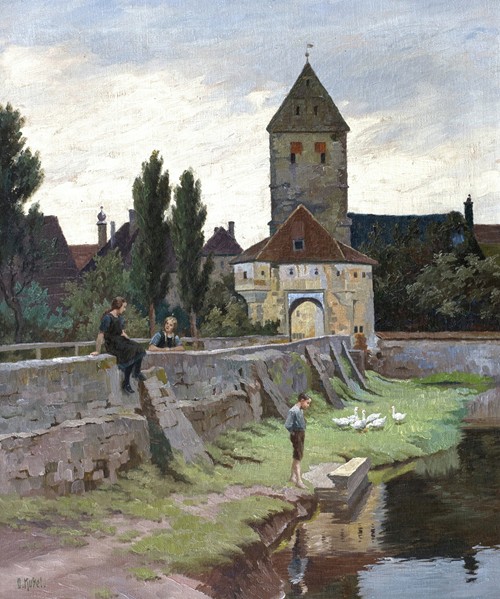Otto Kubel
Otto Kubel was a German painter.
After training at the Dresden School of Applied Arts, he continued his studies at the Academy in Munich. He originally worked as an illustrator, but later devoted himself primarily to painting. Kubel was part of the Bruker Maler artists' colony in Amperstadt. He lived in the Bavarian town of Fürstenfeldbruck for many years, and a street there was named after him. Kubel was best known for his detailed fairy tale illustrations, which were widely used as school wall pictures and postcards in the 1920s and 1930s.
Kubel began his career with an apprenticeship as a carpenter before turning to art and completing a training at the School of Applied Arts. He continued his studies at the Academy of Fine Arts in Munich, where he created not only illustrations but also oil paintings that stood out for their loose brushstrokes.
In 1902, Kubel moved to Fürstenfeldbruck with his wife Laura, his childhood sweetheart, and their three daughters. There the family lived in an artist's villa, and Kubel set up his studio in a nearby building. He was also well connected with other artists in the area and shared his friend Eugen von Ruckteschell's studio when he moved to Amperstadt in 1907. Kubel was very active in the local community: he participated in the first art exhibition in Bruck in 1914, was an assistant lay judge at the district court and a member of the men's choral society. He portrayed Pentele, the choirmaster of Emmering at the time, among others. In 1922, Kubel moved to Munich with his family, but he remained closely connected to Fürstenfeldbruck. When the Bruck artists' association was founded in 1924, he joined it. He died in Munich in 1951 at the age of 82. Since the grave was closed, his gravestone has been in the cemetery of St. Magdalena, next to the graves of other artists.
